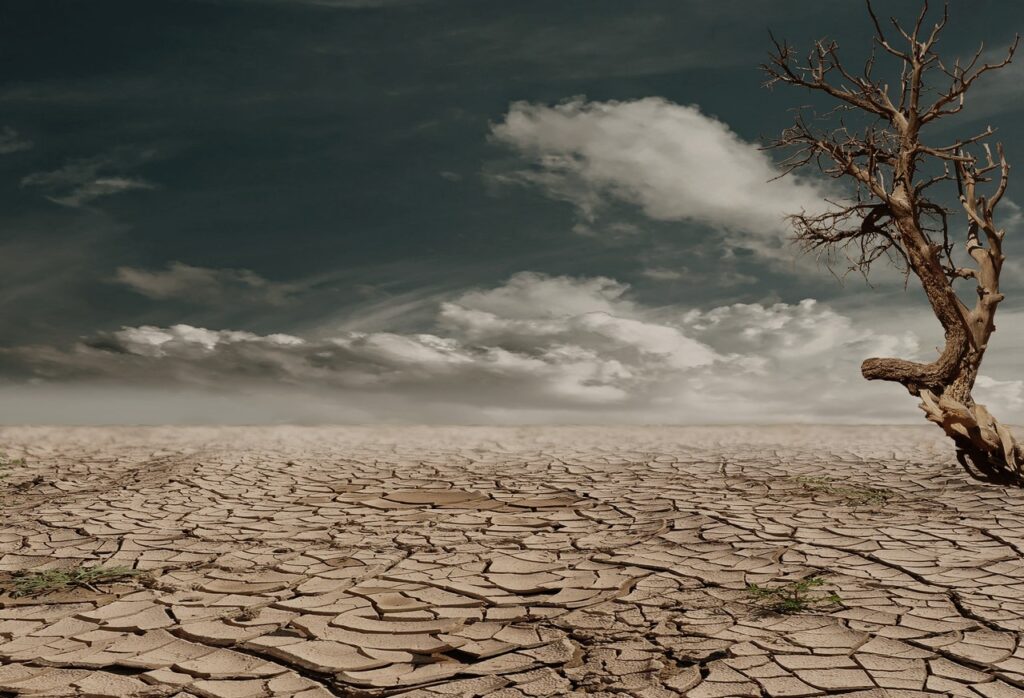To many people, climate change is still an abstract phenomenon that is far-fetched and very unlikely to be experienced. I would definitely not be surprised if attempts to broach the topic attract the popular local Nigerian expression of ‘not my portion’ from many people. The fact however is that climate change is a reality and the impacts are already being felt across the globe, including Nigeria.
The World Health Organization and many public health institutions have designated climate change as the biggest health threat facing humanity for several important reasons bordering largely on social determinants of health1,2. It is indeed an existential threat that must be confronted by governments, communities and individuals at various levels of influence.
Climate change is the gradual shift in weather patterns occasioned by rising global temperature largely from human activities3. The biggest culprit in climate change is the use of fossil fuels upon which almost every economy depends. Climate change happens when greenhouse gases such as carbon dioxide and methane from such human activities accumulate to the extent that it forms an impermeable blanket around the earth, thus preventing it from dissipating the excess heat absorbed from the sun4,5. Gradually, the global temperature continues to rise and initiates a chain reaction with catastrophic effects, beginning with the melting of the ice caps, which leads to rising of the sea level, evaporation of larger quantities of water into the atmosphere, more rainfalls and ultimately more flooding.

Understanding the pathway to the climate change predicament is important in motivating individuals and groups to take necessary actions to mitigate its progression and hopefully begin to reverse the impact. Therefore, it is important to make this a critical part of climate change component of any health literacy effort going forward. Equally important is a clear understanding of the impacts of climate change, which is diverse and experienced in different forms by individuals, communities and nations2,3,6. The direct environmental impacts, such as flooding, extreme weather conditions like hurricanes, droughts, sand storms, increased desertification, loss of biodiversity and even loss of farmlands for livelihood are not all there is to climate change. The direct and indirect health impacts are equally, if not more devastating. A popular belief in the global health community is that using the health argument is more effective for catalyzing climate change action1 and must be kept on the fore burner as much as possible.
Health can be impacted directly by the consequences of climate change in many ways. For instance, more than 11, 000 and 1,833 lives respectively were lost during the Mitch (1998) and Katrina (2005) hurricane events in the United States7,8. Many cases of flood-related deaths have equally been recorded in many parts of Nigeria in recent times. Going by the flooding example also, water-borne diseases such as cholera would as well be on the increase following flooding episodes. Besides people can lose their homes to flooding or other extreme weather-related events and become exposed to other health vulnerabilities. Worst still, relevant infrastructure for support at this critical time such as telephone, roads, or even health facilities may be damaged or disrupted, leading to worsened health outcomes, including death.
Estimates from WHO indicate that in a space of 20 years beginning in 2030, as much as 250,000 more deaths would occur annually from climate change-related malnutrition, malaria, diarrhoea and heat stress, with associated direct health damage costs of USD 2-4 billion/year2. The disheartening aspect is that the most vulnerable segments of the population at every level (regional, national or local), which contribute the least to the problem would bear the greatest brunt of the burden2. Consequently, climate change exacerbates health inequity and undermines universal health coverage (UHC), which should concern all political and other leaders given their commitment to the attainment of UHC as well as other development goals.
It is therefore not surprising that world leaders converged enthusiastically in Glasgow in October 2021 at the 26th meeting of the Conference of Parties to chart a way forward towards addressing the climate change conundrum. A lot of ambitious and laudable initiatives were launched, including the Net-Zero Coalition that gathered a lot of steam and the exploration of financial resources for climate change action especially for developing countries3. Measures for mitigation and adaptation for climate change impacts were also canvassed for adoption at country levels. The WHO presented a special report on climate change and health, where the health argument for climate change action is articulated to guide advocacy.

In all, what is fundamentally important are a deep understanding of the problem at hand and committed actions at individual, community and national levels in a coordinated manner that involves non-state actors. The commitments by heads of government to cut down emissions and to build resilient systems needed to counter climate change impact must go beyond rhetoric and be backed by action. Individuals can begin by planting trees around the homes, migrating to more environment friendly fuel for domestic purposes, riding bicycles in place of cars as often/practicable as possible, putting into practice the 3 Rs (reduction, reuse and recycling) of wastes, as well as enrolment into the National Health Insurance Scheme (NHIS) amongst other necessary measures.
National governments are expected to fast track the implementation of the commitments made at Glasgow, including concrete actions towards the goal of 1.5°C global temperature, phase down the use of coal and eventual phase-out of fossil fuel9. Perhaps the most urgent step is the development of the National Action Plan towards the attainment of the aforementioned commitments. The agreement in Glasgow is that the plan should be in place in 2022 and must include clear standards to enable effective tracking by non-state actors and other stakeholders. As the clock of this deadline has begun to tick it would be reassuring to know that work on this has begun locally. The various research institutes would also do well to key into the search for more climate-resilient products, including food crops. A stitch in time saves nine.
References
1. WHO. Fast Facts on Climate Change and Health: https://www.who.int/publications/i/item/fast-facts-on-climate-change-health
2. WHO. Climate change and health: https://www.who.int/news-room/fact-sheets/detail/climate-change-and-health
3. United Nations. Climate Change: https://www.un.org/en/climatechange
4. US EPA. Basics of Climate Change: https://www.epa.gov/climatechange-science/basics-climate-change
5. National Geographic Society. Climate Change: https://www.nationalgeographic.org/encyclopedia/climate-change/
6. US EPA. International Climate Impacts: https://19january2017snapshot.epa.gov/climate-impacts/international-climate-impacts_.html
7. HISTORY. Hurricane Mitch – Track, Category &Recovery: https://www.history.com/topics/natural-disasters-and-environment/hurricane-mitch
8. HISTORY. Hurricane Katrina: 10 Facts About the Deadly Storm and Its Legacy: https://www.history.com/news/hurricane-katrina-facts-legacy
9. COP26 Health Programme: https://www.who.int/initiatives/cop26-health-programme

